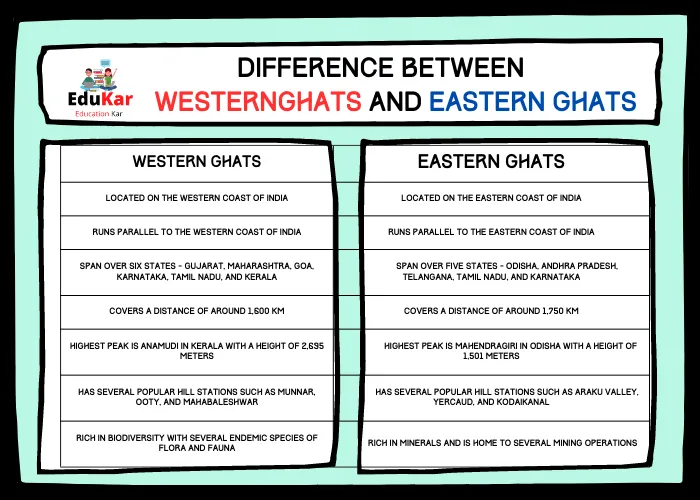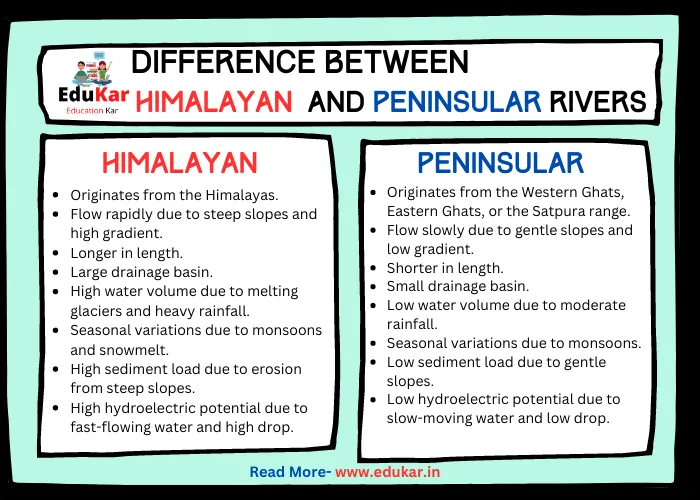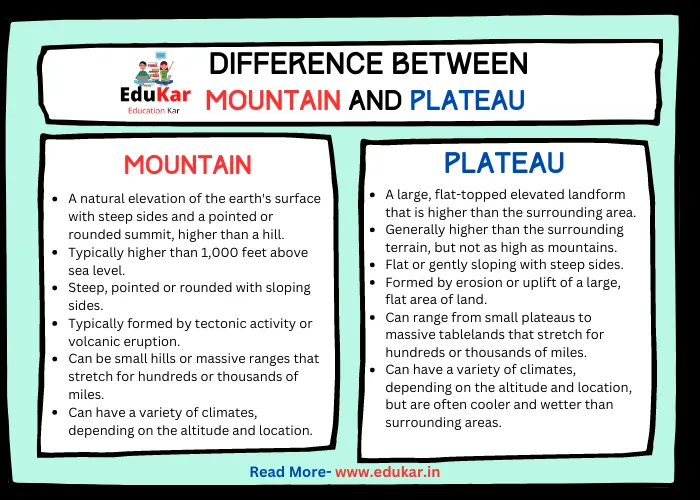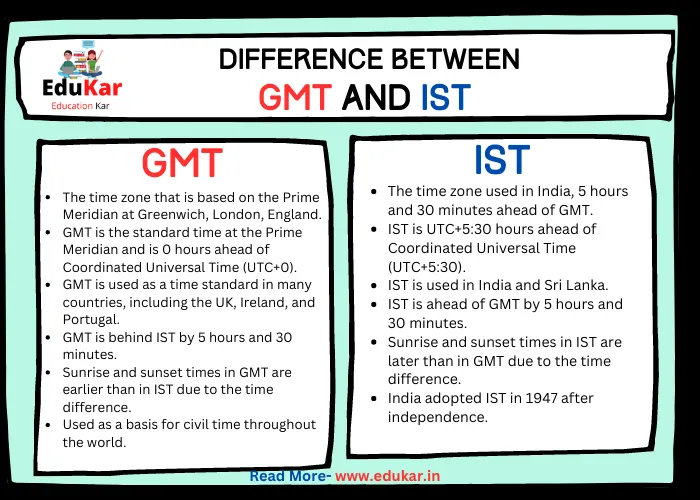Contents
- 1 Introduction
- 2 Western Ghats
- 3 Eastern Ghats
- 4 Difference between Western Ghats and Eastern Ghats
- 5 Conclusion
- 6 FAQs related to Western Ghats and Eastern Ghats for Exams
- 6.1 Where are the Western Ghats and Eastern Ghats located?
- 6.2 What is the difference in length between the Western Ghats and Eastern Ghats?
- 6.3 What is the highest peak in the Western Ghats and Eastern Ghats?
- 6.4 What is the difference in climate between the Western Ghats and Eastern Ghats?
- 6.5 What is the difference in their impact on the monsoon season?
- 6.6 What are the major sources of income in the Western Ghats and Eastern Ghats?
- 6.7 What are some popular hill stations in the Western Ghats and Eastern Ghats?
- 6.8 What are some iconic landmarks in the Western Ghats and Eastern Ghats?
Looking for information on the difference between Western Ghats and Eastern Ghats? Learn about the geography, climate, impact on monsoon, major sources of income, popular hill stations, and more in this comprehensive guide. Discover the unique characteristics of these two mountain ranges located on the western and eastern coasts of India.

Introduction
The Indian subcontinent is known for its diverse landscape, which includes vast plains, deserts, and mountain ranges. Two of the most prominent mountain ranges in India are the Western Ghats and the Eastern Ghats. These ranges not only add to the natural beauty of India but also hold significant historical, cultural, and environmental importance.
Western Ghats
The Western Ghats, also known as Sahyadri, is a mountain range that runs parallel to India’s western coast, stretching for over 1,600 km. The range covers an area of approximately 160,000 sq km and is spread across six states – Gujarat, Maharashtra, Goa, Karnataka, Tamil Nadu, and Kerala. The Western Ghats are known for their unique biodiversity and are recognized as a UNESCO World Heritage Site.
Eastern Ghats
The Eastern Ghats is a mountain range located in the eastern part of India, extending over 1,750 km through Odisha, Andhra Pradesh, Tamil Nadu, and Karnataka. The range covers an area of approximately 75,000 sq km and has an elevation of 1,822 meters. While the Western Ghats are known for their unique biodiversity, the Eastern Ghats are known for their rich cultural heritage.
Difference between Western Ghats and Eastern Ghats
| Western Ghats | Eastern Ghats |
|---|---|
| Located on the western coast of India | Located on the eastern coast of India |
| Runs parallel to the western coast of India | Runs parallel to the eastern coast of India |
| Span over six states – Gujarat, Maharashtra, Goa, Karnataka, Tamil Nadu, and Kerala | Span over five states – Odisha, Andhra Pradesh, Telangana, Tamil Nadu, and Karnataka |
| Covers a distance of around 1,600 km | Covers a distance of around 1,750 km |
| Highest peak is Anamudi in Kerala with a height of 2,695 meters | Highest peak is Mahendragiri in Odisha with a height of 1,501 meters |
| Has several popular hill stations such as Munnar, Ooty, and Mahabaleshwar | Has several popular hill stations such as Araku Valley, Yercaud, and Kodaikanal |
| Rich in biodiversity with several endemic species of flora and fauna | Rich in minerals and is home to several mining operations |
| Has several wildlife sanctuaries and national parks such as Silent Valley National Park and Periyar Wildlife Sanctuary | Has several wildlife sanctuaries and national parks such as Simlipal National Park and Papikonda Wildlife Sanctuary |
| Has a moderate to heavy rainfall, and the climate is generally humid | Has a semi-arid to humid climate with rainfall varying between 700 mm to 1500 mm |
| Plays a crucial role in the monsoon season, acting as a barrier against the rain-bearing winds | Has a limited impact on the monsoon season |
| Known for its waterfalls such as Jog Falls, Athirapally Falls, and Dudhsagar Falls | Known for its scenic hills and valleys |
| Has several major rivers such as the Godavari, Krishna, and Cauvery originating from its hills | Has several major rivers such as the Mahanadi, Godavari, and Krishna originating from its hills |
| Has several dams and reservoirs such as Bhakra Nangal Dam and Koyna Dam | Has several dams and reservoirs such as Sileru Dam and Kaveri Dam |
| Has a significant impact on the local economy with agriculture and tourism being major sources of income | Has a limited impact on the local economy with agriculture and mining being major sources of income |
| Has several ancient and historic sites such as the Ajanta and Ellora caves | Has several ancient and historic sites such as the Konark Sun Temple and Tirupati Temple |
| Has several distinct cultural and ethnic groups such as the Toda and Irula | Has several distinct cultural and ethnic groups such as the Kondh and Gond |
| Has several important pilgrimage sites such as Sabarimala and Mahabaleshwar | Has several important pilgrimage sites such as Tirumala Venkateswara Temple and Jagannath Temple |
| Has a higher level of human development index compared to the Eastern Ghats | Has a lower level of human development index compared to the Western Ghats |
| Has a greater level of conservation efforts and protection | Has a lower level of conservation efforts and protection |
| Has several iconic and recognizable landmarks such as the Western Ghats UNESCO World Heritage Site | Has fewer iconic and recognizable landmarks compared to the Western Ghats |
Location and extent
The Western Ghats, also known as Sahyadri, are a mountain range that runs parallel to India’s western coast. The range extends over 1,600 km, from the state of Gujarat in the north to the southern tip of the Indian subcontinent in Tamil Nadu. In contrast, the Eastern Ghats are a discontinuous range of mountains that run along India’s eastern coast. The range extends over 1,750 km, from Odisha in the north to Tamil Nadu in the south.
Geology and formation
The Western Ghats and the Eastern Ghats have different geological histories and formations. The Western Ghats are a faulted and folded mountain range formed by the collision of the Indian and Eurasian plates around 100 million years ago. The Eastern Ghats, on the other hand, are an ancient mountain range that formed around 1.2 billion years ago due to the collision of the Indian and Australian plates.
Climate and weather patterns
The Western Ghats and the Eastern Ghats have distinct climatic and weather patterns. The Western Ghats receive an average annual rainfall of over 3,000 mm, making it one of the wettest places on earth. The Eastern Ghats, however, receive an average annual rainfall of only around 1,000 mm. The Western Ghats act as a barrier to the southwest monsoon winds, causing heavy rainfall in the west coast of India. The Eastern Ghats, on the other hand, receive less rainfall and do not have a significant impact on the monsoon season.
Flora and Fauna
The Western Ghats and the Eastern Ghats are known for their unique biodiversity. The Western Ghats are home to several endangered species, including the Nilgiri tahr, lion-tailed macaque, and Malabar grey hornbill. The Eastern Ghats, however, have a lower biodiversity compared to the Western Ghats due to its drier climate. Some of the notable species found in the Eastern Ghats include the Indian giant squirrel and the Grey Francolin.
Cultural significance
Both the Western Ghats and the Eastern Ghats have significant historical and cultural importance. The Western Ghats have several ancient temples and forts built by the Maratha and Chola dynasties. The Eastern Ghats have a rich tribal culture, and several ancient inscriptions and rock paintings have been found in the region.
Economic importance
The Western Ghats and the Eastern Ghats are essential for the economy of India. The Western Ghats are rich in minerals like iron ore, manganese, and bauxite. The region is also a major producer of spices, coffee, and tea. The Eastern Ghats, on the other hand, are known for their mineral resources, including bauxite, chromite, and limestone. The region is also home to several thermal power plants.
Environmental concerns
Both the Western Ghats and the Eastern Ghats face several environmental challenges. Deforestation, illegal mining, and poaching are some of the significant threats faced by both mountain ranges. The Western Ghats are also prone to landslides and soil erosion, while the Eastern Ghats face challenges like soil degradation and desertification.
Conclusion
The Western Ghats and the Eastern Ghats are an integral part of India’s natural and cultural heritage. Understanding the differences between these ranges is crucial for developing effective conservation strategies that protect the region’s biodiversity and promote sustainable economic development.
Where are the Western Ghats and Eastern Ghats located?
The Western Ghats are located on the western coast of India, while the Eastern Ghats are located on the eastern coast of India.
What is the difference in length between the Western Ghats and Eastern Ghats?
The Western Ghats cover a distance of around 1,600 km, while the Eastern Ghats cover a distance of around 1,750 km.
What is the highest peak in the Western Ghats and Eastern Ghats?
The highest peak in the Western Ghats is Anamudi in Kerala with a height of 2,695 meters, while the highest peak in the Eastern Ghats is Mahendragiri in Odisha with a height of 1,501 meters.
What is the difference in climate between the Western Ghats and Eastern Ghats?
The Western Ghats have a moderate to heavy rainfall, and the climate is generally humid. The Eastern Ghats have a semi-arid to humid climate with rainfall varying between 700 mm to 1500 mm.
What is the difference in their impact on the monsoon season?
The Western Ghats play a crucial role in the monsoon season, acting as a barrier against the rain-bearing winds. The Eastern Ghats have a limited impact on the monsoon season.
What are the major sources of income in the Western Ghats and Eastern Ghats?
In the Western Ghats, agriculture and tourism are major sources of income. In the Eastern Ghats, agriculture and mining are major sources of income.
What are some popular hill stations in the Western Ghats and Eastern Ghats?
The Western Ghats have several popular hill stations such as Munnar, Ooty, and Mahabaleshwar. The Eastern Ghats have several popular hill stations such as Araku Valley, Yercaud, and Kodaikanal.
What are some iconic landmarks in the Western Ghats and Eastern Ghats?
The Western Ghats have several iconic landmarks such as the Western Ghats UNESCO World Heritage Site. The Eastern Ghats have fewer iconic landmarks compared to the Western Ghats.









